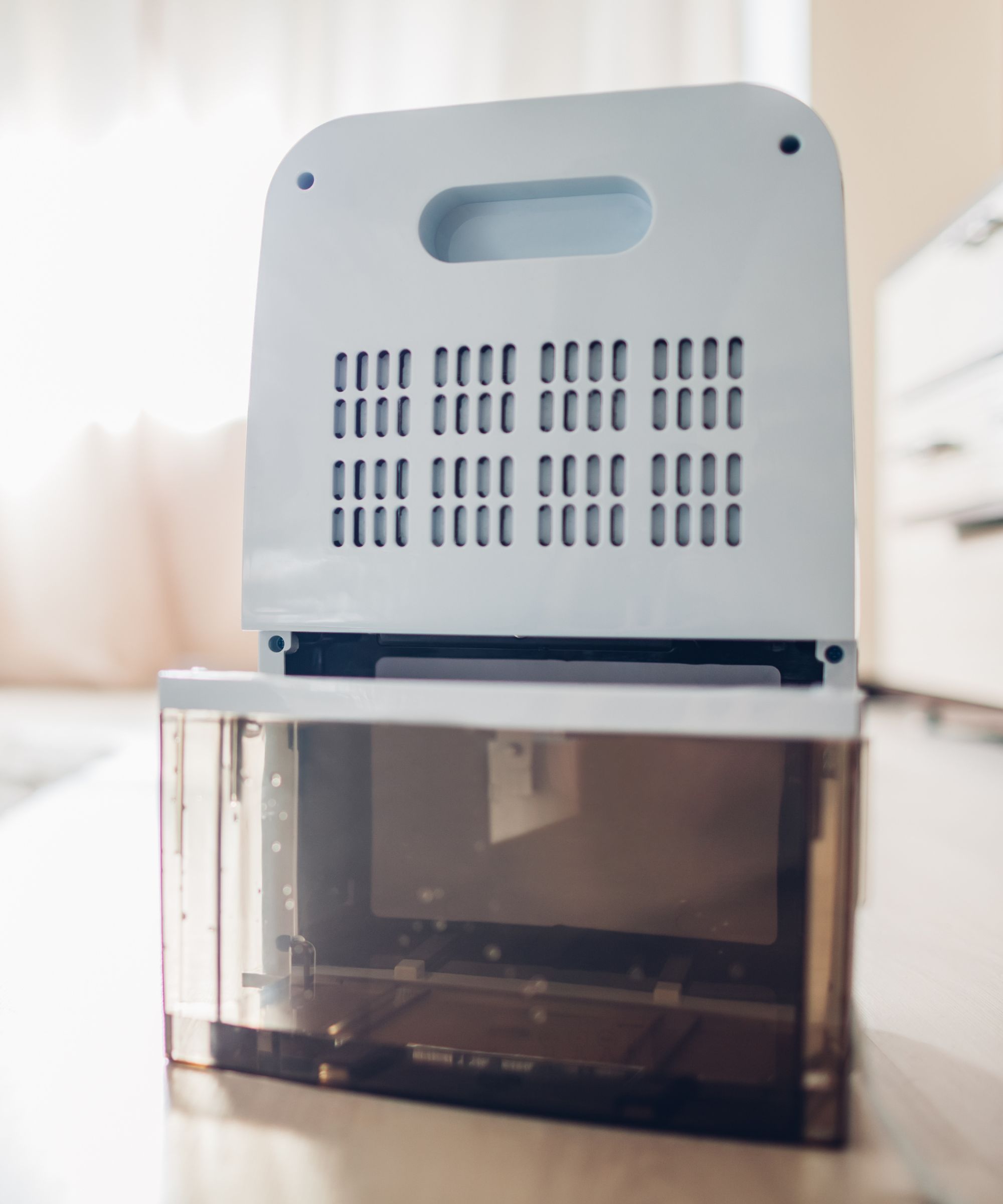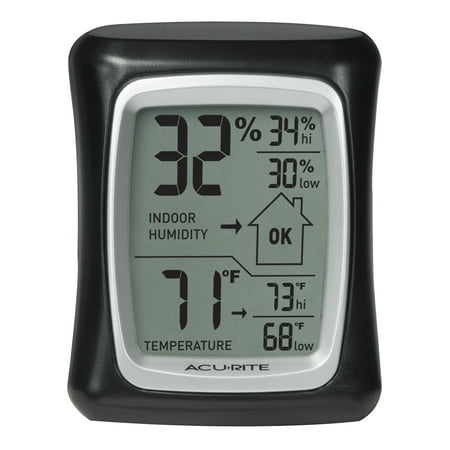
Have you ever woken up with a scratchy throat that does away after your morning coffee? Or have you wondered why your skin is dry and cracking despite your moisturizing routine? It might be that your home has low humidity.
But what causes a house to feel dry? HVAC experts suggest there are five possible causes of low humidity, from ventilation to a ‘thirsty’ home. Luckily, they are all super easy to fix and restore balance.
Here, they explain why it is bad to have low humidity in a house, and how to fix it without breaking the bank.
Why does my house feel so dry?
Managing humidity in a house is a delicate balance. Too high and you risk dampness and mold. Too low, however, and your house can feel dry.
Generally speaking, the best humidity levels for a home year-round is between 30-50%. Max Veggeberg, CEO at Tetra explains, ‘This can impact your wellbeing; dry air and low humidity can irritate your nasal passages, throat, and skin, making allergy and respiratory illness symptoms like congestion, coughing and dry, itchy eyes difficult to manage.
‘If your home has low humidity, wooden furniture and fixtures in your home may lose their luster and crack,’ he adds.
There are 5 main causes for this problem
1. Poor ventilation

Andy Shu, HVAC specialist at ZapFixers explains that good ventilation can help let dry air out of your home and humid air in to balance humidity levels. If your home has little to no ventilation, however, dry air can be trapped inside (this is worse in summer when you might be running your AC for long periods of time, or in homes with forced air heating systems).
Andy adds: ‘This is especially true in modern, energy-efficient buildings.’
The trick here is to simply improve ventilation in your home to allow for better air transfer. This can be as simple as opening windows (even opening windows in winter) or, for a longer-term fix, installing vents around your home.
2. Too much ventilation

However, as with anything, ventilation is a delicate balance. Too much ventilation could be pulling all the humid air out of your home, leaving the air dry. If you have constantly running extractor fans or a dry air pump to improve bathroom ventilation, this is likely the case for your property.
Andriy Boyko of A.O. Handy Inc. asks, ‘Ever left a bathroom fan on for hours? Or constantly cracked open a window “for fresh air”? It’s great for airflow but terrible for humidity. Those fans and open spaces suck the moist air right out and bring in dry, outdoor air, especially in colder months.’
Turn these fans off every once in a while to keep warm humid air in.
3. You have run your AC, dehumidifier, or heating too long

AC units, forced air heating, and the best dehumidifiers are all essential for most homes. However, running them for too long, or using a combination of them at the same time, can all lead to a dry feeling at home, explains Max Veggeberg, home service expert. ‘Running your AC or dehumidifier too often – removing too much moisture from the air – can also cause low humidity.’
Andy Shu, HVAC specialist adds, ‘Forced-air heating systems, especially gas or electric furnaces, dry out the air by warming it without adding moisture. This is a significant issue in winter when heaters run continuously.’
4. You have a ‘thirsty’ house

It might sound ridiculous, but it might be your home and decor that are to blame for the low humidity. Andriy Boyko, seasoned handyman says, ‘Believe it or not, your walls, floors, and furniture can be thirsty. Materials like wood and drywall love to absorb moisture from the air, especially if they’ve been newly installed. This can keep your indoor air from ever feeling comfortable.’
This is where a humidistat can be useful, helping you to constantly monitor your home’s humidity level and add moisture when it’s needed before things can be damaged.
5. The outside air is dry

If you live in a dry area or experience cold, dry winters, then the outside air might be the reason for your low humidity, rather than anything in your home, says Max Veggeberg, home service expert.
He explains, ‘A house can have low humidity if there hasn’t been much precipitation in the area, or if dew or fog levels are typically low. If you have your windows open in that climate, that will likely contribute to the air indoors being drier.’
Knowing what humidity your house should be in winter will help you balance these levels and spot low humidity quickly, helping you to remedy it before things get worse.
How to fix a ‘dry’ house

When fixing a dry house with low humidity, the first step is to stop whatever is causing it, be it turning off your AC or shutting windows. Then, your goal is to increase the humidity inside without creating mold problems. Generally, there are five ways to do this, depending on the extent of your humidity problem, and how much you are looking to spend.
- Start with a humidifier: Max Veggeberg suggests starting with a good humidifier, such as the bestselling easy-fill Homedics cool mist humidifier from Walmart. These will add moisture to the air quickly to help fix long-term problems. Be sure to also ‘Monitor humidity levels with a hygrometer, and adjust your air conditioning system based on the season to help maintain a comfortable balance,’ he adds. Your goal is to get your home to that 30-50% sweet spot.
- Use houseplants: To help the humidifier, you can also add in some of the best indoor houseplants, adds Andy Shu, HVAC specialist, ‘Certain plants like peace lilies, ferns, or areca palms [availible at Walmart] naturally release moisture into the air through transpiration.’ This will help to slightly increase humidity without needing a new appliance.
- Boil water: Andy Shu continues, ‘Boil water on the stove or leave the bathroom door open after a hot shower to release steam into the air.’ This is a great solution if you are looking to save money at home.
- Dry laundry inside: There are several benefits to air-drying laundry, one of them being to increase humidity in your home Andy Shu explains. ‘Hang wet clothes to dry in living spaces, which adds moisture to the air as they evaporate.’ A large drying rack from Walmart helps you dry more at once, letting more moisture into your home at a time.
- Seal gaps and insulate: If the cause of your dry air is humid air escaping or dry air getting in, Andriy Boyko, an expert handyman suggests draft-proofing your home. ‘Check for sneaky air leaks around your windows, doors, and walls. A little weatherstripping, some caulk, or even draft stoppers can make a world of difference. Insulation isn’t just for keeping warm – it also helps stabilize humidity levels.’

A small humidifier is often more than enough to add the right amount of humidity into your home without overdoing it and causing mold. Always use a hydrometer to keep an eye on things, however, and turn the humidifier off when you hit 30-50% humidity

Running foam insulation strips around your windows and doors will block cold drafts and keep humid air inside your house to prevent dry airways and irritated skin

Keep an eye on your home's temperature and humidity easily with this two-in-one thermo-hygrometer. Place it away from heating or AC vents for the most accurate readings.
When making your home feel less ‘dry’, it is vital that you don’t send things the other way and make your home too humid. If you do tip the scales, however, we have compiled some quick ways to reduce humidity in a house, too.







